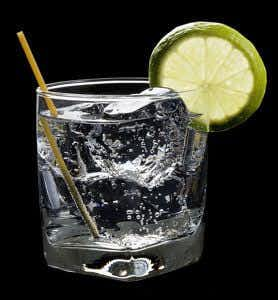
Quinine is one of the oldest drugs in the pharmacy. Even before the Spanish discovered the New World, native healers in Peru were using the bark of the cinchona tree to treat fever, malaria and indigestion. An Augustinian monk wrote about the uses of the “fever tree” back in 1633.
Quinine Against Fever:
In Europe, this bark proved useful for treating the fever and chills of malaria. Chemists later determined that the active ingredient in this healing bark was quinine, and it was used around the world wherever mosquitoes carried the disease. The British even incorporated it into their “tonic water.”
Quinine for Muscle Cramps:
No one in the United States has worried about malaria for decades. But quinine was popular as a treatment for nighttime leg cramps. For years, people bought this drug in over-the-counter products such as Legatrin, Q-vel and Quinamm to relieve muscle cramps.
In 1994 the FDA banned quinine from over-the-counter sale. The agency decided that quinine was too dangerous for people to take without medical supervision.
Dangers of Quinine:
Quinine can cause serious side effects, including life-threatening anemia and irregular heartbeats. Other hazards include severe headache, visual disturbances, rash, itching, ringing in the ears, nausea, diarrhea and liver damage. If a pregnant woman took quinine, her baby could be born with a defect.
The FDA maintains that leg cramps are not a serious health problem, while quinine can be lethal. Over the years, more than 90 people have died of quinine complications.
Restricting Quinine Prescriptions:
Despite this, nearly two million Americans took quinine to relieve their leg cramps. Doctors continued to prescribe quinine sulfate for restless legs as well as leg cramps.
Then the FDA decided to crack down. Only one brand of quinine was allowed on the market. Qualaquin is approved only for treating certain types of malaria, and it cost (in 2007) more than $4 per pill.
The more rigorous ban made millions of people unhappy.
One reader wrote,
“It was refreshing that our doctor prescribed quinine sulfate for my husband’s restless leg syndrome. He takes one pill each night before bedtime and gets wonderful results.”
Tonic Water for Leg Cramps:
Even people who used quinine successfully for years no longer have access to it. Some people have found, however, that drinking tonic water can alleviate leg cramps, especially those that occur at night.
Q. I have suffered with nocturnal leg cramps for many years. Long ago, my doctor prescribed quinine pills and they did the trick. No more cramps.
Then the FDA, in its wisdom, banned the sale of quinine. After much pain, I discovered tonic water contains quinine. Every evening I have a large glass of tonic water and have no more cramps!
A. Doctors used to prescribe 200 to 300 mg of quinine for nighttime leg cramps. A glass of tonic water would provide about 20 mg, one tenth of the dose.
There is recent evidence to support the FDA’s decision to limit quinine prescriptions. A study found that British people taking at least 100 mg of a quinine compound daily for a year were more likely to die during the five year follow-up period (Fardet, Nazareth & Petersen, JAMA, May 9, 2017). Because a liter bottle of tonic water contains only 83 mg of quinine, drinking tonic water provides far less of this compound. Drinking tonic water is generally considered safe, but there are some people who need to avoid it completely.
We suspect that the bitter taste of the quinine in tonic water may stimulate special channels (transient receptor potential, or TRP, channels) in the mouth, throat and stomach. Even a small amount might be sufficient to stop leg cramps quickly. You can learn more about this fascinating explanation by listening to our interview with neuroscientist Bruce Bean.
Other Remedies for Leg Cramps at Night:
Although there aren’t very many other medications that can relieve leg cramps, there are a number of home remedies that can help. One popular remedy is pickle juice or pickle relish. These work through the same TRP channels that we think are responsible for the quinine effect.
We discuss a number of home remedies and other approaches to this common problem in our Guide to Leg Pain. One reader had good results from an inexpensive remedy:
“After suffering with leg cramps for over 30 years, I heard about putting a bar of soap under the bottom sheet of the bed. Nothing kept me from having to get up and massage my feet and legs until I tried the soap. What a relief to be able to finally get a good night’s sleep!”
Other approaches to nocturnal leg cramps include drinking low-sodium V-8 juice, consuming extra calcium, magnesium and B vitamins. Some even report that a little yellow mustard can relieve nighttime leg cramps. These remedies appear to be safer than quinine, and possibly even better than tonic water.
Revised 2/26/2018

